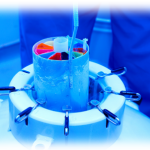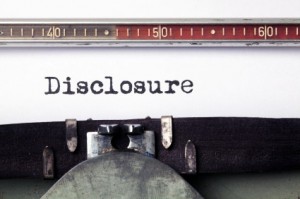Posts Tagged ‘sperm donation’
Why Creating “McEmbryos” is Just Plain Wrong
Introduction
Recently, Alan Zarembo of the L.A. Times released a story alleging that California Conceptions was combining donated eggs with donated sperm and called them “donated embryos.” If there were leftover cryopreserved embryos, ownership of the embryos apparently went to California Cryobank (CC). If true, this is an egregious assault on reproductive ethics.
Defining embryo donation

About one-third of all patients undergoing in vitro fertilization (IVF) will have excess embryos to cryopreserve. About one-half of these will not be used for reproduction by the patients who created them. (Bangsboll et al., 2004; Lyerly et al., 2010) Embryo donation occurs when patients with unused cryopreserved embryos make the amazing decision to pay it forward and donate their embryos to patients in need. In true embryo donation, the patients own the embryos and make disposition decisions regarding their embryos. It is estimated that 2-10% of all cryopreserved embryos are donated to patients in need.
Why is creating “McEmbryos” so wrong?
Allegedly, California Conceptions would use donor sperm and donor eggs to create embryos. At times, all the resulting embryos would be transferred simultaneously to numerous couples, each receiving approximately two embryos at a time. This would commonly be called a “split donor/donor cycle.” It is, however, an absolute misrepresentation to call them donated embryos. At least in this split donor/donor cycle scenario, where all the embryos were transferred, there would be no cryopreserved embryos left whose ownership was uncertain.
What if not all the embryos were transferred and some were cryopreserved? As I understand, CC transferred no more than two embryos at a time to numerous patients, with the remainder cryopreserved. The residual cryopreserved embryos became the property of CC.

According to the article, egg and sperm donor profiles are sent to prospective recipients. As soon as CC received a “buy-in” from a few patients, the “donor embryos” were created from the donor eggs and sperm. Who made the decision to combine these two donors? What happens to the left over cryopreserved embryos? The article stated that dozens of embryos would be created through the combination of a pair of donors with the embryos then frozen while CC looked for patients who wanted them. And yet, the clinic claimed to have only ten sets of cryopreserved “donated embryos” in their tanks at any given time.
While they stated they didn’t want to create a bank, it would appear that this is precisely what was being done.
I feel there is a potential conflict of interest on the part of any IVF facility regarding the disposition decision of any cryopreserved embryos that they own. Patients normally have options such as using them to build their family, donation to science, donation to a laboratory for quality assurance testing and personnel training, keeping them cryopreserved forever, and finally, donating them to patients in need (embryo donation).
With the methods described in the article, a number of logistical and ethical questions arise:
- Were the sperm and egg donors fully aware of what was to be done with the resulting embryos?
- How did the IVF practice decide which sperm and egg donors should be combined? Was this decision made through market research? If so, who made these decisions?
- Is anyone tracking where all these donor-donor conceived offspring end up?
- Who ultimately owns the cryopreserved embryos? In the article, the physician interviewed said the clinic owned them when they were frozen
- Who makes the disposition decisions regarding these embryos? Will the IVF facility that owns the embryos be likely to make disposition decisions that do not benefit their bottom line? Who has the best interests of the cryopreserved embryos at heart when the embryos are owned by the IVF facility? Is it possible that CC is the entity that is really “donating” their remaining cryopreserved embryos
- What happens to the cryopreserved embryos if the practice closes or is sold?
- Perhaps most important, although it may not be a problem presently but for the future, what happens to the cryopreserved embryos that are never chosen?
While certainly not meaning to demean the cryopreserved embryos, I can’t help but think of these dono/donor cryopreserved embryos as fast food embryos or “McEmbryos.” I can just see the patients coming in, looking above the cash register to the menu above and ordering a “Number 3,” which has a burger (i.e., bright, blonde-haired, blue-eyed egg donor) and fries (i.e., handsome, athletic and tall sperm donor) and ends up getting the order supersized to boot (i.e., requesting twins). I should write clearly that this is not the current method CC uses to to match recipients to remaining cryopreserved embryos but the slippery slope exists and other practices may eventually emulate this process
What did EDI try to do over the past year to remedy the problem?
We suspected what might be happening at CC well over a year ago but didn’t have proof. We approached the American Society for Reproductive Medicine (ASRM) who examined the information and eventually sent it on to the Society for Assisted Reproductive Technologies (SART). SART did an investigation agreeing with our preliminary assessment. Unfortunately, CC was not a member of SART so they had little influence with CC.
There was some discussion of placing CC on the Center for Disease and Control’s (CDC) radar, asking that they potentially audit CC. I am not aware if this was ever done.
There was some discussion of revising the Ethic’s Committee Opinion on embryo donation detailing the inappropriateness of creating “McEmbryos,” but in the recent revision sent out to all ASRM members to review this past August contained no such language. I contacted ASRM and volunteered to help write the couple of paragraphs that would address the issue but I was never contacted. My current understanding is that the ASRM Ethics Committee will be taking up this issue in the beginning of 2013 and I am hopeful they will make a stand against creating “McEmbryos.”
Is it really ASRM or SART’s fault?
ASRM and SART are membership organizations. Anyone can join ASRM whereas SART is only open to IVF practices. These entities are not designed to truly police their members. Certainly, they can bar them from membership, but let’s face it, this is really not much of a punishment. Most patients are not really aware if a practice is a member of either organization, so expulsion does more to protect ASRM and SART from criticism than it does to protect the patients.
In reality, I am not suggesting that ASRM or SART begin sanctioning their members. These organizations are made up of bright individuals wanting what is best for members and patients alike. I don’t believe ASRM or SART could ever expose themselves to legal liability and try to be anything more than what they were originally designed to be.
I feel criticism towards ASRM and/or SART is potentially misplaced. While I do feel these organizations can certainly take a stand against the creation of “McEmbryos,” they can only provide educational materials and information to members and patients. never entering the realm of fining, condemning practices or policing practices. That is simply not their job.
I am not being insensitive to the needs of the patients
California Conceptions is providing amazingly healthy embryos to patients in need. How could anyone not be touched the story twin girls born to a single 41 year-old woman? There is no question that the donor/donor split cycle can be far more cost effective than many other options. The ends to this process are what we all strive for – a healthy family.
Call me old-fashioned but I still feel there are instances where the ends cannot justify the means. Are we are loosing all respect for the embryos and treating them utterly as a commodity? The slippery slope is becoming quite steep. Are we ready for expanding banks of unclaimed embryos across the country owned by practices or physicians and not the patients? I’m sorry but the means being used here are fraught with uncertainty and may result in a list of unintended consequences.
What are the potential repercussions of the L.A. Times story?

At least this election year is over. I had grave concerns that the story would break early in the election cycle and would become a political football, resulting in a series of consequences around the country. I still believe we are at risk in the following ways:
- • Poorly designed and reactive legislation may yet be created on state or national level
- • This story may motivate the “Personhood” advocates by encouraging them to win personhood for embryos thereby protect them from becoming “McEmbryos”
- • There will be “guilt by association,” leaving other legitimate embryo donation facilities open to criticism and ridicule
- • All of this will reflect poorly on basic IVF facilities that are frequently viewed as unregulated, even though we are accountable to more regulatory agencies than any other area of medicine
There may be significant backlash regarding this story and we should all be prepared to answer questions that may arise from the media, our peers and our patients.
How can embryo donation programs hold but not own the donated embryos?
At Embryo Donation International (EDI), the embryo donors are still able to request that their donated embryos be returned if needed. For example, if the children of an embryo donor were tragically killed in a motor vehicle accident, it seems absolutely appropriate that the cryopreserved donated embryos should be sent back to the donors. To discourage this from being done without good reason, transportation costs for returning the embryos, which is estimated to be $300, are the responsibility of the original donors.
Once the embryos are transferred into the recipients, however, they now “own” them. In this way, EDI never truly owns the donated embryos. We are the conservator and protect the embryos while never making any disposition decisions regarding their fate. We never own the donated embryos and we encourage all embryo donation facilities adopt this model of conservatorship.
What can be done to correct the current problem?
- Various membership organizations such as ARSM, Pacific Coast Fertility Society (PCFS), SART and RESOLVE could release position statements condemning the creation of “donated embryos” without a destination. This could help guide public opinion.
- Perhaps the embryo donation programs would be willing to sign a contract stating that they will not participate in the creation of embryos without a destination. Programs willing to sign and honor the contract would be adhering to the highest of ethical standards.
- Through the court of public opinion and if the L.A. Times article is accurate, patients may no longer want to participate in what they feel in an unethical practice.
- Legislative action on the part of California may be necessary but this will take time and a great deal of expertise. We run the risk, however, of having well-meaning legislative actions spilling over and harming the process of embryo donation or IVF itself.
- CC itself may need to modify its business model by allowing patients to own the cryopreserved embryos.
From my perspective, we have a few options:
Something really needs to be done. I don’t feel that this unethical practice should continue. A corporation, business or physician practice should never own embryos, no matter how brief. These embryos are also not truly donated unless you feel CC is able to donate the excess cryopreserved embryos. The question is if we should play an active or a passive roll in determining what takes place. I personally prefer the active roll so you can count EDI in on doing our best to guide the process.
Sour grapes? Nope, just sour taste!
CC is a potential competitor of EDI. I have made this clear to each and every person I have spoken to regarding this current dilemma. When we were contemplating the expansion of our ten-year embryo donation program into EDI, we also looked at the option of a money-back guarantee such as is offered by CC. Understanding the delivery rates for recipients of truly donated embryos ranges from 27-45%, the likelihood of returning the majority of the payments back to recipients made it unlikely we could even keep our doors open. Most “shared risk” options also charge a premium on top of the normal fees. Recalling that embryo recipients are emotionally and financially drained, the idea of tacking on a large additional fee seemed unfair to the recipients and quite impractical to the process. Embryo donation works for recipients, in part, because it is more cost-effective than many other options.
So you see, it is not “sour grapes” that is guiding my writing; it is just a sour taste. If the article was accurate, I feel strongly that creating “McEmbryos” is an affront to IVF and embryo donation programs, misleading to embryo recipients and totally unfair to the cryopreserved embryos that are currently waiting to be chosen.
If you agree, please co-sign this blog….
We are going to do something a bit different with this blog. We are strongly encouraging not just the routine comments that follow our blog but we are also asking that practices, patients and interested parties who agree that creating “McEmbryos” is ethically inappropriate sign below. By endorsing the statement below, we will hopefully begin to separate ourselves from such entities that practice the “McEmbryo” method of “embryo donation,” moving forward with a resolution that will work best for all.
routine comments that follow our blog but we are also asking that practices, patients and interested parties who agree that creating “McEmbryos” is ethically inappropriate sign below. By endorsing the statement below, we will hopefully begin to separate ourselves from such entities that practice the “McEmbryo” method of “embryo donation,” moving forward with a resolution that will work best for all.
By signing below, I do hereby agree that creating banks of cryopreserved embryos is ethically unjustifiable and support sound solutions that will adhere to the highest of ethical standards supporting patients and cryopreserved embryos in the best possible way.
References:
Reasons to Donate
By: Vicki D., an embryo donor
“In the order of nature we cannot render benefits to those from whom we receive them, or only seldom. But the benefit we receive must be rendered again, line for line, deed for deed, cent for cent, to somebody.’ – Ralph Waldo Emerson, Compensation
On May 13, 2010, I made a decision. It wasn’t your normal everyday decision on things like what shoes to wear, where to have lunch, or which shade of lipstick to buy. It even surpassed those important decisions we encounter in life such as what house to buy, the most lucrative financial investments and selecting the best care for elderly parents. It was a decision much more substantial, incredibly emotional and most importantly, everlasting. It was regarding the fate of our embryos. Yes; five embryos, frozen, suspended in time – a significant and extraordinary reminder of a successful IVF cycle producing twin girls just two years prior. Considering that my family was now complete, the desire to have more children had abated. But the process was far from over and I knew this going in. There are five potential lives to consider currently residing in a sub-zero environment. So the question remained… what did one do with extra embryos when one’s need or desire to expand your family has subsided?
In my quest to determine the future of my five frozen embryos, I discovered several options to choose from. These ranged from permanent storage – or in some cases “abandonment,” destruction, donation to stem-cell research,  donation to the IVF clinic lab, or donation to an infertile couple or person in need. Continued voluntary storage brought unnecessary substantial fees, not to mention the inevitable procrastination of decision making. Abandonment wasn’t an option for obvious reasons as I felt a responsibility towards these embryos. The only things I have ever abandoned in my life were the occasional art project or my first premature marriage in my early twenties. The concept of destruction simply didn’t make logical sense. Why go through all the expense and trouble of creating embryos that one day would be destroyed because there was no better option considered? Stem-cell research or IVF clinic donation seemed like fair choices since I wouldn’t have my twins without past research in IVF. Even so, there had to be a better option available that would help promote the preservation of life and help out infertile couples desperately wanting a baby.
donation to the IVF clinic lab, or donation to an infertile couple or person in need. Continued voluntary storage brought unnecessary substantial fees, not to mention the inevitable procrastination of decision making. Abandonment wasn’t an option for obvious reasons as I felt a responsibility towards these embryos. The only things I have ever abandoned in my life were the occasional art project or my first premature marriage in my early twenties. The concept of destruction simply didn’t make logical sense. Why go through all the expense and trouble of creating embryos that one day would be destroyed because there was no better option considered? Stem-cell research or IVF clinic donation seemed like fair choices since I wouldn’t have my twins without past research in IVF. Even so, there had to be a better option available that would help promote the preservation of life and help out infertile couples desperately wanting a baby.
I remember the years of anguish I experienced being infertile. Everywhere I went I saw pregnant women or newborn babies. It became an obsession, perceived as something so intangible for me yet came so easily for others. There would be no remedy but a child. Why not help another couple expand their family? Why not help end the anguish? Why not “Pay it Forward” to the infertile community in such desperate need? The simplest answers to these questions became the best option.
So the decision came with three stages. Firstly, there was the genetic hurdle to consider. There is something about setting your genetic code, or more specifically, your potential genetic offspring, free into the world that can be somewhat unsettling. Where will these embryos end up, will they survive and what kind of life will they have? Will they know their history? Will they have questions? Will they look like me? But in the greater scheme of things, do these questions really matter?
The value and definition of family transcends any DNA makeup.
In the pursuit of the family unit, we tend to look beyond the genetic code and focus on the family element. The concept of having a family does not automatically equate to comparable genetic material as can be seen with any family with an adopted child. It’s about being part of a team, functioning as a whole and sharing your love and commitment to live and experience life together.
Secondly, there is an element of giving back; Paying it Forward to the infertile world. Donating the embryos was my way of paying back what I was so very fortunate to finally have – a family. Prominent memories of being unfulfilled without children are still fresh in my mind. I honestly believe that donating my idle embryos to someone in need helps to promote the probability of life.
And finally, chance. The chance to help someone build a family, the chance of potential life for the embryo, the  chance for you to give the greatest gift in life, the chance to take a chance! So for any of you out there who find yourselves with important decisions to make about your embryos in storage, think back a bit to your own infertile days. That memory will help guide you to do the right thing for someone with the same needs and desires as you have. Take a chance and do something good for humanity.
chance for you to give the greatest gift in life, the chance to take a chance! So for any of you out there who find yourselves with important decisions to make about your embryos in storage, think back a bit to your own infertile days. That memory will help guide you to do the right thing for someone with the same needs and desires as you have. Take a chance and do something good for humanity.
Donating the embryos was my way of paying back what I was so very fortunate to finally have – a family.
In the end I trusted Embryo Donation International (EDI) and Dr. Sweet with my precious embryos. I knew that with their high ethical standards and sheer devotion to the embryo they would give my embryos a chance at life, and hopefully help to build another family, just like they helped to build mine. And on every Mother’s Day ever since the donation I hope and wonder that by liberating my embryos they were able to help create another family somewhere out there and that they are as happy as I am.
Vicki D.
Mom, a Loving Wife and now, an Embryo Donor
torig71@gmail.com
Part 2: Disclosure from the Perspective of the Embryo Recipient
This is Part 2 of the Disclosure From the Perspective of the Embryo Recipient series. If you missed Part 1 and want to catch up, please scroll below or click here. In the week prior, we also covered the same disclosure issue but from the perspective of the embryo donor, scroll further down or click Part 1 and Part 2. More is yet to come in the two weeks ahead as we continue to evaluate this topic that is important to so many.
 When is the Best Time to Disclose Embryo Donation to the Child?
When is the Best Time to Disclose Embryo Donation to the Child?
If parents decide to disclose, it is seemingly better to do so earlier rather than later. Disclosing to a young child allows the child time to absorb the information. If disclosure occurs in adolescence or later, the young adult may feel mistrust, alienation, identity confusion, frustration and even hostility towards his or her family (Ethics Committee, 2004 & Mahlstedt PP, et al. 2010). About 46% of the donor sperm offspring who were told at the age of 18 or older stated they were confused about the disclosure. According to the research published, it seemed as though it was best to tell the child before the age of 10 because waiting doubled the number of children who were unsettled with the information.
How Often Do Offspring Inadvertently Discover Their Origins?
The most common reason for embryo recipients to disclose was a fear that the child would accidently discover the facts at a later date (MacCallum F, et al. 2007). When recipients are considering embryo donation, they commonly toss the idea around with friends and family. I urge caution here. The more people who know of their decision to be embryo recipients the greater the likelihood that offspring may discover their origins.
Even if the recipient parents keep the information to themselves, the children may still find out. One study of adult offspring of sperm donation found that about one-third of the individuals learned of their donor origins after an argument, from another person or they figured it out themselves (Mahlstedt PP, et al. 2010). In a recent study, about 10% (47/458) of the sperm donor offspring who were searching for their donors and half-siblings found out by accident (Beeson DR, et al. 2011). They either were apparently told by siblings, family or friends; discovered paperwork or unusual medical issues, overheard parents talking or learned as a consequence of divorce. Though sperm, egg and embryo donation procedures differ in many respects, when examining these two studies it is clear that there is a reasonable risk that the offspring will discover their origins even in the best of circumstances.
Are Embryo Donor Offspring Harmed by Non-Disclosure?
Interestingly, children do not seem to be harmed if disclosure does not occur. Also, if disclosure occurs early, neither the children nor the family seem to be harmed (MacCallum F, et al. 2007 & 2008).
Should Disclosure be Mandated?
Many hope that egg and sperm donation programs can move from strategies focused on compensation to a more altruistic perspective (Scheib JE, et al. 2008). Embryo donation is quite different since financial incentives, if they exist at all, are minimal and altruistic reasons for donating are currently the primary emphasis.
Unfortunately there is a much greater preference to discard or abandon embryos than to donate them. Placing any impediments to embryo donation, such as mandating disclosure, may not only reduce the number of embryos donated but will almost certainly result in a greater number of embryos discarded or abandoned. I cannot imagine that advocates for mandated disclosure would want the loss of embryos and potential families to be the unintended outcome.
There also has also been a push to create a national registry for egg and sperm donation (Ravitsky V, et al. 2010). Embryo donation might also be included in this process. Amongst many issues involved in such a registry, the following concerns exist:
- Who would pay for the registry?
- What information would be kept?
- Who has have access to the information?
As a field, we must be concerned about the safety of medical information of such as a private nature and which previously was privy to only a few people. It is frightening to learn how unsecured online medical information has become. These are real privacy concerns about millions of health records left unprotected, as reported by the government.
If a national registry actually is established, who will pay for it? Who will have access to it? Can you imagine the terrible impact it might have if someone hacked into the database and either released the personal medical information or tried to blackmail parents so that disclosure wouldn’t occur?
Until better safeguards can be designed, I will have significant concerns that private medical information will not be safe in a national registry.
Summary Comments
The decision to disclose the use of donated embryos to create a family is an extraordinarily difficult one for embryo recipients. As will be discussed in a future blog, discussions with mental health professionals are not adequate to help recipients make this decision.
I feel that if the recipient starts to tell friends and family that donated embryos were used, the need for disclosure grows significantly. It is very destructive for children conceived through third party assistance to find out their origins during adolescence and beyond.
One of the common reasons given for not disclosing is fear that the non-genetic parent will be rejected. Actually, there is no data to support or deny this concern. Embryo recipient parents seem to make great parents and the children are well adjusted regardless of disclosure decisions. That stated, it is pivotal that unintended disclosure not take place as this can cause irreparable harm to the family as a whole.
While counseling with a mental health professional is encouraged, their tendency to immediately equate embryo donation with adoption shows bias in suggesting uniform disclosure. Patients want support and guidance as they work through the difficult decisions but do not want to be told what to do.
The discussion of infertility is less of a taboo but there are still areas of society as well as some religions that will reject the child and the family created through donor eggs, sperm and embryos, causing potential harm to all. It is not for me to say that disclosure is right or wrong. It is my place to help educate the donors and recipients so that they can make the best decision for themselves and their embryo donor children.
The Last Survey In The Series:
To make this discussion as interesting and as current as possible, I will ask that the reader participate in the following survey. The survey below is to be taken assuming you were the offspring of embryo donation. I will summarize the results of this survey in the next blog while reviewing the information we know about the disclosure issues from the perspective of the embryo donor offspring.
Please ask your family, friends and anyone else interested to join in the survey and add comments to the blog as we wade together through the complex issue of disclosure of the embryo donation process to others, especially the child.
Survey: “Imagine You Were an Embryo Donor Offspring”
Next Week:
Please be sure to watch for our next blog that will be titled, “Embryo Donation Disclosure Issues From the Perspective of the Embryo Donor Offspring”.
References: Ethics Committee of the ASRM. Informing Offspring of their conception by gamete donation. Fertil Steril 2004;81(3):527-31.
Golombok S, Lycett E, MacCallum F, Jadva V, Murray C, Rust J, Abdalla H, Jenkins J, Margara R. Parenting infants conceived by gamete donation. J Fam Psychol. 2004 Sep;18(3):443-52
Klock SC. The controversy surrounding privacy or disclosure among donor gamete recipients. J Assist Reprod Genet. 1997 Aug;14(7)-378-80.pdf
Jadva V, Freeman T, Kramer W, Golombok S. The experiences of adolescents and adults conceived by sperm donation: comparisons by age of disclosure and family type. Hum Reprod. 2009 Aug;24(8):1909-19.
MacCallum F. Embryo donation parents’ attitudes towards donors- comparison with adoption. Hum Repro 2009;24(3)-517-23.
MacCallum F, Golombok S, Brinsden P. Parenting and child development in families with a child conceived through embryo donation. J Fam Psychol. 2007 Jun;21(2):278-87.
MacCallum F, Keeley S. Embryo donation families: a follow-up in middle childhood. J Fam Psychol. 2008 Dec;22(6):799-808.
Mahlstedt PP, LaBounty K, Kennedy WT. The views of adult offspring of sperm donation: essential feedback for the development of ethical guidelines within the practice of assisted reproductive technology in the United States. Fertil Steril. 2010 May 1;93(7):2236-46.
Ravitsky, V. & Scheib, J.E. (2010). Donor-conceived individuals’ right to know. Hastings Center Bioethics Forum 2010;40:(4).
Scheib JE, Ruby A. Contact among families who share the same sperm donor. Fertil Steril. 2008 Jul;90(1):33-43.
Shehab D, Duff J, Pasch LA, Mac Dougall K, Scheib JE, Nachtigall RD. How parents whose children have been conceived with donor gametes make their disclosure decision: contexts, influences, and couple dynamics. Fertil Steril. 2008 Jan;89(1):179-87.
Disclosure Issues From the Perspective of the Embryo Recipient
As discussed in a previous blog, the embryo donor really sets the stage regarding disclosure. They either can choose Anonymous procedures, perhaps with the option of Open-Identity at some later date, or an Open Embryo Donation process. Let’s assume that an Open Embryo Donation process will legally stipulate the issue of disclosure. If Anonymous, however, it will be up to the embryo recipient to decide if they are going to tell friends, relatives or the child themselves.
What Exactly Are Recipients Disclosing?
The American Society for Reproductive Medicine (ASRM) believes there are two stages of disclosure to the offspring. The first involves the decision to tell the child and the second involves how much information to disclose (Ethics Committee, 2004). In disclosure to the child, the parents have the option to provide identifying or non-identifying information, when available. Recipients tend to try to disclose less rather than more, if they decide to disclose at all (MacCallum F. 2009).
Are Some Recipients More Likely to Disclose?
The makeup of the embryo recipient parent or parents will help dictate the probability of disclosure. Recipients who are single or are part of same sex couples will be more likely to disclose since the circumstances of their children’s conception will ultimately become a topic of conversation. However, heterosexual couples are the least likely to disclose.
Why Don’t Embryo Donation Recipients Disclose?
The following were the most common reasons why egg/sperm/embryo recipients do not disclose (MacCallum F, et al. 2007, Jadva V, et al. 2009 & Mahlstedt PP, et al. 2010):
- Desire to protect the child
- Fear of the offspring rejecting the nongenetic parents
- Felt there was no need for disclosure
- Were simply uncertain about how to tell the child
From the embryo recipient’s perspective, they have the right to privacy and the right to choose whether to disclose. Disclosure will result in the broadcasting of the recipient’s infertility issues, which they may have kept quite private (Klock SC. 1997). Embryo recipient parents and their children may be potentially be damaged by other people’s negative reactions, social stigma and the resulting isolation (Shehab D, et al. 2008). Let’s face it: there indeed might be a lack of societal approval of offspring who originated from donor material. Many people are judgmental regarding embryo donation, especially in cultures and religions that emphasize genetic inheritance.
While some couples undergoing egg/sperm donor conception immediately agreed with the disclosure concern, at least half of the partners were not in agreement (Shehab D, et al. 2008). In disclosing heterosexual couples, women were more in favor of disclosure with men more often deferring to their wives to make the decision. In non-disclosing couples, men usually preferred nondisclosure and women tended to defer to their husbands. Conflicting advice from family and friends seemed to make the decision more difficult.
While most embryo donation recipient couples agree on the disclosure or nondisclosure decision, it is interesting to note that fathers (56%, 9/16) were more likely to not want to disclose than mothers.(43%, 9/21). It was hypothesized that fathers may not have recalled as much about the embryo donors, were not as skilled as the mothers in communicating with the child or were simply more protective than the mothers (MacCallum F. 2009).
What Do We Know About the Frequency of Disclosure In Egg, Sperm and Embryo Donation?
How often disclosure occurs in the world of embryo donation is uncertain, but there is a growing body of data suggesting that only a minority of the children are told. In an English study of 17 embryo donation families with donor offspring who were five to nine years old, only 18% of the recipient parents had told their children, 24% planned on telling 12% were undecided and 47% stated they would not tell (MacCallum F. et al. 2008). The reality is that many of those who planned on telling or were undecided may decide against disclosure as the child ages and enters the more difficult years of adolescence. This appears to be different than other donor procedures where 46% of donor sperm insemination parents and 56% of egg donation parents (averaging to about 50%) planned to disclose (Golombok S, et al. 2004).
Since both parents lack a genetic link to the child in embryo donation, they may be even more private about embryo donation than other types of third-party conception families. While adoptive parents almost universally disclose (100% in this Golomok’s study),. embryo recipients carry and deliver the child, so it is far easier for non-disclosure to take place.
Would Consultation With a Mental Health Professional be Helpful?
Mental health professionals, who often rely on adoption literature and experience, almost unanimously encourage disclosure whereas physicians are commonly more neutral. Parents who have used donor material feel the decision to disclose is private and highly personal and should be left to the discretion of the individual families rather than regulated in any way (Shehab D, et al. 2008). Many patients resent direct suggestions that they disclose and far prefer a discussion that examines their own needs and perspectives (Klock SC, 1997). In reality, it is really not appropriate to give a uniform recommendation that does not account for the personal, ethical and religious views of the embryo recipients.
I believe that unbiased psychological counseling early during the embryo donation process may be reasonable but that additional counseling closer to the time that disclosure might take place, will probably be more appreciated. Perhaps even more important, embryo recipients want to hear from other recipients, people who have worked through the issues or are struggling with the disclosure issues themselves (Klock SC, 1997). At EDI, we have plans to create a forum where patients will be able to seek highly desired anonymous peer support.
We will continue this discussion, on disclosure issues from the perspective of the embryo recipient, tomorrow and also launch our final survey. The reference list will also be posted with this second half tomorrow. Stay tuned!
Disclosure Issues in Embryo Donation – Survey 2 Results
Brief Introduction
This is the third of a five-part series examining the complex decision-making surrounding the disclosure of the genetic origins of embryo donor offspring to family, friends and the offspring themselves.
Associated Blog Segments
The first segment of this series introduced the disclosure topic. We next conducted a survey with questions asked from the perspective of an embryo donor. Incorporating the results of the survey, the second blog segment, Part I and Part II, examined the disclosure issues from the perspective of the embryo donor. A second survey was released asking the readers to imagine they were embryo recipients. The results of that survey are discussed below.
Survey Results: “Imagine You Were an Embryo Recipient”
1. If I were an embryo recipient, I would prefer an (choose only one):
- Anonymous Embryo Donation 44% (15/34)
- Approved Embryo Donation 24% ( 8/34)
- Open Embryo Donation 32% (11/34)
Comments:
Not quite half of the respondents wanted to receive donated embryos in a totally anonymous fashion, twice as many as the first survey where respondents imagined they were embryo donors. In total, about 2/3rds of the respondents preferred an anonymous donation process. When receiving embryos, anonymity seems to be a priority.
2. If I received donated embryos, I would tell the following:
| Relationship | Yes | No | N/A (not alive or no current relationship) |
| My parents | 73% (24/34) | 21% (7/34) | 6% (2/34) |
| My in-laws | 62% (21/34) | 29% (10/34) | 9% (3/34) |
| My siblings | 71% (24/34) | 21% (7/34) | 9% (3/34) |
| My children | 70% (23/34) | 30% (10/34) | 0% (0/34) |
| My friends | 59% (20/34) | 38% (13/34) | 3% (1/34) |
| Average: | 66% (112/170) | 28% (47/170) | 6% (9/170) |
Comments:
More than twice as many respondents would tell family and friends about receiving donated embryos than would not tell. As you will see in the upcoming blog, the percentage wanting disclosure here is significantly higher than is seen with actual embryo donors.
3. As an embryo recipient, would you want to tell any of your embryo donation offspring that they came from donated embryos?
- Yes 59% (20/34)
- No 18% ( 6/34)
- Not certain 23% ( 8/34)
Comments:
More than half of the respondents stated they would tell their children that they came from donated embryos. Those that were uncertain may move towards nondisclosure if disclosure is not done early.
4. As an embryo recipient, if I chose an Anonymous or Approved Embryo Donation (both are still anonymous), I would prefer to:
- Remain Anonymous: 41% (14/34)
- Be initially Anonymous with the possibility of Open-Identity at Any Age: 56% (19/34)
- Be initially Anonymous with the possibility of Open-Identity at 18+ Years of Age: 3% ( 1/34)
Comments:
If the respondent chose an anonymous procedure, slightly less than half stated they would stay anonymous. If Open-Identity was preferred, nearly all wanted to have the ability to contact the donors when the child was younger than 18. Interestingly, this same pattern was seen in an earlier survey where the majority desired open-identity before age 18 but answering from the perspective of the embryo donor. Once again, this is very different than what is currently done with adoption.
5. As an embryo recipient, if I chose the Open Embryo Donation process I would prefer:
- Open Embryo Donation with Open-Identity at any age: 44% (15/34)
- Open Embryo Donation with Open-Identity at 18+ years of age: 56% (19/34)
Comments:
In the Open-Identity part of the contracted process, slightly more of the respondents wanted the option to contact the donor when the child was at least 18 years of age. Because the percentages were so close, however, it is possible that the respondents were rather split in this decision.
Thank you for your input. Tomorrow we will release the next installment of this series – Disclosure Issues From the Perspective of the Embryo Recipient. This will be released in two separate sections. With the completion of this segment, we will also launch our final survey and hope you will again give us feedback.
Part 2: Disclosure Issues From the Perspective of the Embryo Donor
What Will The Relationship Be Like Between The Embryo Donors and the Offspring?
Depending on when disclosure might occur in an Open Embryo Donation or in an Anonymous with Open-Identity option, it is important to picture the offspring somehow entering the donor’s life five to 10 years following the donation or even decades later. Will the contact always be welcome? After meeting for the first time, what will come next: affection, friendship, politeness, family or even love?
Reunions can be threatening to both the embryo donor offspring and the recipients. The parents who raised the child may feel threatened by the relationship between donors and offspring. While reunions of biologic parents and adoptees can be very rewarding, it is uncertain how the situation will fair in the world of embryo donation in either the short or long-term (Grotevant HD, et al, 2008).
The reality is that we don’t have a great deal of information regarding the complex interactions between the donor-offspring and their genetic parents or the donor offspring and their biologic brothers and sisters. We don’t know how the interactions will affect the existing donor offspring –parent/recipient relationship. We need to be careful not to push patients in one direction, only to find out that harm may have been done. When there is no clear data, I feel we must be cautious in what we recommend.
Should Embryo Donors Tell Friends and Family of Their Decision to Donate Their Embryos?
In the recent poll, the majority of respondents were willing to tell friends and family of their decision to donate. In some societies and religions, this decision will be met with concern and even condemnation. The decision to disclose the donation decision needs to be made with care as family and interpersonal relationships may be harmed.
Would Consultation With a Mental Health Professional be Helpful?
The recommendations regarding psychological counseling are confusing. In 2004, the American Society for Reproductive Medicine (ASRM) stated (Ethics Committee for ASRM, 2004):
All prospective recipients and donors should receive counseling with a qualified mental health professional about the psychological implications of donation and disclosure for the recipients, donors, and children.
However, in an article published two years later, ASRM recommended (Practice Committee for ASRM SART, 2006):
Psychological consultation with a qualified mental health professional should be offered to all couples participating in the donor-embryo process.
Psychological assessment by a qualified mental health professional is recommended to ascertain suitability of potential donors.
Recipients of donor embryos and their partners should receive counseling about the potential psychosocial implications.
It would appear that ASRM both mandates and suggests that counseling be performed, so take your pick. We always encourage all embryo donors to seek assistance from a qualified mental health professional. We are careful, however, to not make this mandatory. We have concerns that if we make donating embryos too difficult and time consuming for the donors, they will be more likely to discard or abandon their embryos.
Summary Comments:
When embryo donors decide to donate their embryos, they must also guide the process concerning eventual disclosure. Open procedures are more likely to include disclosure and eventual contact between the donors and the offspring. Open-Identity procedures may also result in eventual contact, perhaps decades after the donation process was performed and can have uncertain short and long-term consequences. If disclosure occurs, the offspring will probably be fine. According to research, if they are not told, they will doubtfully suffer consequences as long as disclosure didn’t occur by accident. These issues will be covered in detail in an upcoming blog.
Disclosure decisions are controlled by the donor and accepted by the recipient. While more donor egg and sperm offspring feel it is their right to know their genetic origins, the reality is that embryo donation has particular circumstances that make secrecy possible. To say secrecy is always wrong is no different than stating emphatically that it is always right.
Donors and recipients must agree on disclosure decisions together for the good of everyone involved, including the unborn child.
To make this discussion as interesting and current as possible, I’d ask that you participate in our next survey. Please take the survey imagining you are an embryo recipient. I will summarize the survey results in the next blog while reviewing the information we know about the disclosure issues from the perspective of the embryo recipient.
Please ask your family, friends and anyone else interested to join in the survey and add comments to the blog as we wade together through the complex issue of disclosure of the embryo donation process to others, especially to the child.
Next:
Please be sure to watch for our next blog: “Embryo Donation Disclosure Issues From the Perspective of the Embryo Recipient.”
References:
Ethics Committee of the American Society for Reproductive Medicine. Informing offspring of their conception by gamete donation. Fertil Steril. 2004 Sep;82 Suppl 1-S212-6.
Grotevant HD, Wrobel GM, Von Korff L, Skinner B, Newell J, Friese S, McRoy RG. Many Faces of Openness in Adoption: Perspectives of Adopted Adolescents and Their Parents. Adopt Q. 2008 Jul 1;10(3 & 4):79-101.
Widdows H, MacCallum F. Disparities in parenting criteria: an exploration of the issues, focusing on adoption and embryo donation. J Med Ethics 2002;28:139-42.
MacCallum F, Golombok S, Brinsden P. Parenting and child development in families with a child conceived through embryo donation. J Fam Psychol. 2007 Jun;21(2):278-87.
MacCallum F, Keeley S. Embryo donation families: a follow-up in middle childhood. J Fam Psychol. 2008 Dec;22(6):799-808.
Practice Committee for ASRM SART. 2006 Guidelines for gamete and embryo donation. Fertil Steril 2006;86(Suppl 4)S38-50.pdf
Disclosure Issues From the Perspective of the Embryo Donor
This is the second of a five-part series by Dr. Craig R. Sweet examining the complex decision-making surrounding the disclosure of the genetic origins of embryo donor offspring to family, friends and the children themselves.
If embryo donors are kind and generous enough to donate their unused frozen embryos to patients in need, their next important decision revolves around whether they want to donate anonymously or if they would like to create some type of relationship with the recipients and their potential offspring. At EDI we want to give donors the widest range of choices, so we offer Anonymous, Approved and Open Embryo Donation procedures.
We do not have accurate national statistics about which embryo donation procedure is chosen most often. Some matching  organizations only deal with open procedures while many reproductive facilities only offer anonymous arrangements. Embryo donors, therefore, often have to search for the facility that will cater to their needs.
organizations only deal with open procedures while many reproductive facilities only offer anonymous arrangements. Embryo donors, therefore, often have to search for the facility that will cater to their needs.
Is Adoption the Best Model To Follow?
I have written about why I believe the term “embryo adoption” should not be used in the context of embryo donation and the American for Reproductive Medicine has a similar perspective. Regardless of our beliefs, some donors feel a responsibility to the embryos that includes making certain the embryos are donated to a loving and safe home. These donors feel the process is similar to adoption.
Over the years, there has been a trend in traditional adoption towards providing adopted offspring with information about their genetic parents after they turn 18 years of age. This trend towards disclosure is being used to encourage more open procedures in embryo donation. But there is a major difference between the two forms of family building: embryo donation offspring do not have to be told of their origins. Because the recipient carries and delivers the child, it is completely possible to keep the “non-genetic” relationship a secret from family, friends and the child. The donor offspring-recipient relationship begins differently than adoption from legal, emotional, social and practical perspectives.
Embryo donors and the genetic parents of a newborn are able to stipulate what kind of recipient will be given their embryos and newborn. While they will state they are doing what is best for the child, some may argue they are doing what is best for themselves. In the case of child neglect/abuse/abandonment, the courts and case workers will decide what they feel is best for the living child. In this situation, the needs of the child take priority over the perceived needs of the genetic parents. Embryo donation always focuses on the needs of the parents while adoption may focus on the needs of the child.
Are Embryo Recipient Families and Offspring Happy?
Embryo donors may worry about the kind of home in which the potential children of their donated embryos will be raised. Results from recent research can help mitigate these concerns since it appears that embryo donation families are more child-centered than adoptive and other IVF families (MacCallum F, et al. 2007 & 2008). This may be due in part to the recipients’ older age and maturity compared to their younger IVF and adoptive parents. Given their strenuous attempts to conceive, the embryo recipients seem to be extraordinarily appreciative of their gift, making their homes more child-centered and the children seem to be well attended.
 Unlike adoption, it is doubtful that the offspring of embryo donation will have the “history of rejection” to resolve like adopted children might have after being separated from their birth parents (Widdows H, et al. 2002). Although studies are lacking, this hurtle doesn’t seem to exist for children created from embryo donation. Indeed, though the donors felt their own family building was complete, they also felt strongly about giving their unused embryos a chance at life as well as wanting to “pay it forward” to deserving recipients. Families created through embryo donation are a product of a loving gift and not formed from rejection.
Unlike adoption, it is doubtful that the offspring of embryo donation will have the “history of rejection” to resolve like adopted children might have after being separated from their birth parents (Widdows H, et al. 2002). Although studies are lacking, this hurtle doesn’t seem to exist for children created from embryo donation. Indeed, though the donors felt their own family building was complete, they also felt strongly about giving their unused embryos a chance at life as well as wanting to “pay it forward” to deserving recipients. Families created through embryo donation are a product of a loving gift and not formed from rejection.
It would, therefore, appear that the offspring created through embryo donation do not have to have a relationship with the embryo donors to be well adjusted. While it may be desired and perhaps even preferred by offspring, it remains the embryo donor’s choice at this early stage of the game.
What Options Are Readily Available?
I believe that in most Open Embryo Donations, the child will be told of their origins. In fact, contracts may stipulate that the donors have the right to contact the child at a later date or may provide a mechanism for the child to be able to contact the donor at a certain age. An Open Embryo Donation process more closely mirrors an adoption process.
For Anonymous Embryo Donation, EDI is considering Open-Identity, an intermediate option allowing embryo donor offspring access to medical and other types of information after they reach a specified age. A number of steps are needed for open-identity to work:
- Embryo donors must agree to an anonymous process with the option of open-identity at a later date.
- The embryo recipients are not mandated to disclose, so only those offspring who are told may seek contact with the donors.
- If the embryo donor offspring desire contact, they will notify the clinic that performed the embryo donation procedure to access identifying information.
- It is essential that the embryo donors maintain contact with the embryo donation facility so that up-to-date identifying information is available.
I find it curious that most open-identity procedures, such as in adoption, identifying information is only provided at or beyond the age of 18. I can’t help but wonder if the child would be better served by having contact earlier, especially if it is truly desired by all parties. If the donors and recipients agree, why not initiate contact earlier, such as in the formative years? The respondents to our first poll seem to agree with the vast majority favoring an open-identity disclosure before the age of 18.
We will continue this discussion, on disclosure issues from the perspective of the embryo donor tomorrow and also launch the second of our three surveys. The reference list will also be posted with this second half tomorrow. Stay tuned!
Survey Results: Imagine You Are an Embryo Donor
The first segment of this series introduced the disclosure topic and linked to our first of three surveys. There were a total of 17 respondents with the results examined below.
Survey Results: “Imagine You Are an Embryo Donor”
1. If you were an embryo donor, which would you prefer (choose only one)?
- I would prefer an Anonymous Embryo Donation process. 18% (3/17)
- I would prefer an Approved Embryo Donation process. 41% (7/17)
- I would prefer an Open Embryo Donation process. 41% (7/17)
Comments:
Anonymous and Approved Embryo Donation procedures together were only slightly preferred over Open Embryo Donation. It would appear those answering the question wanted to know more about the recipients than a simple anonymous process would provide.
2. If I donated my embryos, I would tell the following:
| Relationship | Yes | No | N/A (not alive or no current relationship) |
| My parents | 71% (12/17) | 29% (5/17) | 0% (0/17) |
| My in-laws | 47% (8/17) | 41% (7/17) | 12% (2/17) |
| My siblings | 59% (10/17) | 24% (4/17) | 17% (3/17) |
| My children | 65% (11/17) | 29% (5/17) | 6% (1/17) |
| My friends | 65% (11/17) | 35% (6/17) | 0% (0/17) |
| Average: | 61% (52/85) | 32% (27/85) | 7% (6/85) |
Comments:
Twice as many respondents would tell family and friends about donating their embryos than would not tell. Embryo donors have previously stated telling friends and family might result in harsh judgments from those who didn’t fully understand their motivations for donation. This concern for judgment may have been reflected by the fact that in-laws were the least frequently told group in the poll above.
3. Would you want to have the embryo donation offspring told that they came from donated embryos?
- Yes 47% (8/17)
- No 18% (3/17)
- Not certain 35% (6/17)
Comments:
About half of the donors would want the offspring told they were from donated embryos. The other half was uncertain or definitely would not disclose. The uncertain group may gravitate towards nondisclosure over time unless committed to disclosure process early.
4. If I choose an Anonymous or Approved Embryo Donation process (both are still anonymous), I would prefer (choose only one):
- To remaining Anonymous: 12% (2/17)
- Be initially Anonymous with the possibility of Open-Identity at Any Age: 59% (10/17)
- Be initially Anonymous with the possibility of Open-Identity at 18+ Years of Age: 29% (5/17)
Comments:
About 88% wanted an Open-Identity process. The respondents also wanted offspring to have the ability to contact donors when the children were younger than 18 by two-to-one over those wanting Open-Identity at 18 years of age or older. This is very different than what is currently done with adoption.
5. If I choose the Open Embryo Donation process, I would prefer:
- Open Embryo Donation with Open-Identity at Any Age: 71% (12/17)
- Open Embryo Donation with Open-Identity at 18+ Years of Age: 29% ( 5/17)
Comments:
Consistent with question four, the respondents wanted Open-Identity younger than 18 years of age, which is very different from what is done in the adoption world.
Thank you for your input. Tomorrow we will release the next installment of this series – Disclosure Issues From the Perspective of the Embryo Donor. We’ll also launch our next survey this week as well and hope you will give us your feedback.
Disclosure Issues In Embryo Donation: A Five Part Series
Introduction
Embryo donors and recipients are faced with a number of complex decisions. Embryo donors first have to make the difficult decision about the fate of their cryopreserved embryos. If they are kind and generous enough to choose embryo donation, at EDI they must next decide what type of donation process they prefer:
- Anonymous Embryo Donation: Best for the donors who desire closure following donation.
- Approved Embryo Donation: Good for donors who want to learn about the recipients through a mental health professional’s report that excludes any identifying information.
- Open Embryo Donation: This option is best for the embryo donor who wants to form a relationship with the recipients. This process includes legal contracts, mental health professional interviews, physical exams and laboratory evaluations.
Embryo recipients must also choose the type of donation process they prefer. They must pay additional fees as the complexity of  the donation process increases. Though the recipients may not realize this at the time, choosing between anonymous and open procedures begins to form the decisions about disclosing the children’s origins to the offspring themselves. The decision whether or not to tell the embryo donor offspring of their genetic origins is a complicated and important issue.
the donation process increases. Though the recipients may not realize this at the time, choosing between anonymous and open procedures begins to form the decisions about disclosing the children’s origins to the offspring themselves. The decision whether or not to tell the embryo donor offspring of their genetic origins is a complicated and important issue.
The goal of this five-part series is to explore the complex issues surrounding the decision to disclose the genetic origins of embryo donor offspring to family, friends and the children themselves. This multifaceted decision requires our trying to understand the perspectives of the various participants in the embryo donation process, namely the embryo donors, the embryo recipients and the offspring themselves.
For example, if you were an embryo donor, would you want to have a relationship with a child who was being raised by another family? If so, at what age would you want them to contact you? If you were an embryo recipient, would you tell friends, existing children, extended family and the children themselves that their genetic origins were from embryo donors? If so, at what age would you tell the children? Would you want them to have a relationship with the embryo donors? And finally, if you were the product of embryo donation, would you want to know who your genetic parents are? When would you want to be told? Would you seek a relationship with the donors and their children, your genetic brothers and sisters?
This is a sensitive topic and, quite plainly, it needs to be discussed carefully, sensitively and openly.
How We Will Start
To make this discussion as interesting and as current as possible, I am asking the reader to complete three brief surveys. The first survey will ask questions pertinent to the perspectives of embryo donors, the second will focus on embryo recipients and the final one will probe how children borne through this unique reproductive option might feel. Each survey will be available for completion for about 10 days.
You will find the survey on this link on Survey Monkey. It only takes a few minutes to complete. We consider your input invaluable to help us understand this complex topic.
Blog: Introduction To Disclosure Issues (This one)
Survey: “Imagine You Are An Embryo Donor”
Blog: Results of “Imagine You Are An Embryo Donor” survey and discussion about “Disclosure Issues From the Perspective of the Embryo Donor”
Survey: “Imagine You Are an Embryo Recipient”
Blog: Results of “Imagine You Are an Embryo Recipient” survey and discussion about “Disclosure Issues From the Perspective of the Embryo recipient”
Survey: “Imagine You Are an Embryo Donor Offspring”
Blog: Results from the “Imagine You Are an Embryo Donor Offspring” survey and discussion about “Disclosure Issues From the Perspective of the Embryo Donor Offspring”
Blog: “Summary Comments On The Embryo Donation Disclosure Issues”
Please ask your family, friends and other interested parties to complete the survey and add their comments to the blogs. If you wish to be notified of future blogs, either please subscribe to our blog RSS or like the EDI Facebook page.
Thank you!
Please visit and complete our survey here:
Next Month:
Please be sure to watch for our next blog that will be titled, “Embryo Donation Disclosure Issues From the Perspective of the Embryo Donor”.